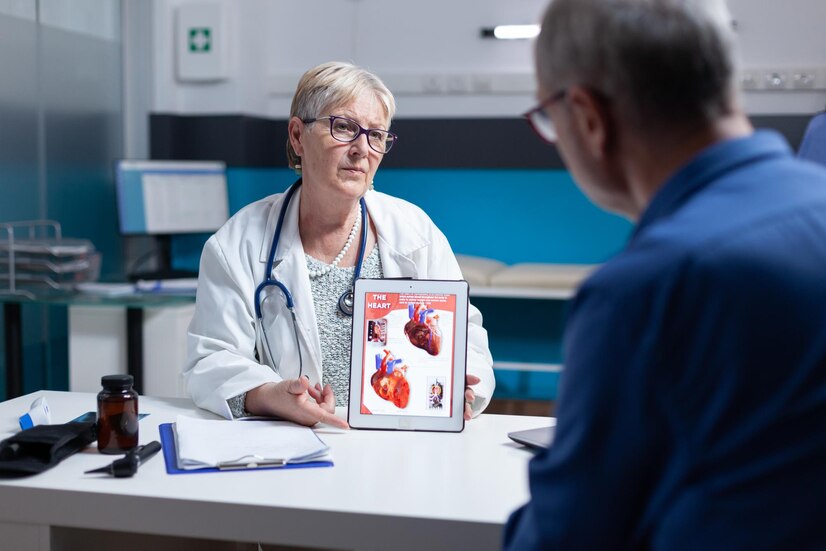Oral cavity cancer, a significant subset of head and neck cancers, has traditionally been managed through a combination of surgery, radiation therapy, and chemotherapy. However, advancements in surgical technology, particularly robotic surgery, have transformed the landscape of treatment options available for patients. Robotic surgery, particularly Trans oral Robotic Surgery (TORS), has emerged as a promising approach for treating oral cavity cancers. This blog explores the role of robotic surgery, specifically Trans oral Robotic Surgery (TORS), in the management of oral cavity cancer, highlighting its benefits, challenges, and future directions.
Understanding Robotic Surgery
Robotic surgery refers to a minimally invasive surgical technique that utilizes robotic systems to assist surgeons in performing complex procedures with enhanced precision and control. The most widely used robotic system which provides surgeons with a high-definition, 3D view of the surgical area, allowing for intricate manoeuvres that are difficult to achieve with traditional surgical methods.
The Rise of Transoral Robotic Surgery (TORS)
Transoral Robotic Surgery (TORS) has emerged as a groundbreaking approach for treating cancers located in the oral cavity and oropharynx. This technique allows surgeons to access tumors through the mouth, minimizing the need for external incisions. TORS was first introduced in the mid-2000s and has since gained FDA approval for various head and neck malignancies, including cancers of the tongue, tonsils, and base of the tongue.
Advantages of Transoral Robotic Surgery (TORS)
- Minimally Invasive: TORS significantly reduces the need for large incisions, which is beneficial for patient recovery. Traditional surgeries often require cutting through the jaw or neck, leading to longer recovery times and increased postoperative complications.
- Enhanced Visualization: The robotic system provides a magnified, high-definition view of the surgical site, allowing for precise tumour excision while preserving surrounding healthy tissue. This is crucial in the oral cavity, where maintaining function is vital.
- Improved Functional Outcomes: Studies have shown that patients undergoing TORS experience better functional outcomes regarding speech and swallowing compared to those who have traditional surgery. This is particularly important for oral cavity cancer patients, as these functions are often severely impacted by conventional surgical approaches.
- Shorter Hospital Stays: Patients who undergo TORS typically experience shorter hospital stays and quicker recovery times, allowing them to return to their daily lives sooner.
- Lower Risk of Complications: The minimally invasive nature of TORS often results in fewer complications, such as infections and prolonged pain, which are common in open surgeries.
Clinical Outcomes and Evidence
Research has demonstrated that TORS is not only safe but also effective in treating oral cavity cancers. A study involving patients with oropharyngeal squamous cell carcinoma showed that TORS provided comparable oncological outcomes to traditional methods, with disease-specific survival
rates around 88% after three years. Furthermore, TORS has been associated with lower rates of postoperative complications and better quality of life indicators post-surgery.
Challenges and Limitations
Despite its advantages, TORS is not without challenges. Some key limitations include:
Access and Training: Not all medical centers have access to robotic systems, and the learning curve associated with robotic surgery can be steep. Surgeons require specialized training to perform TORS effectively.
Tumor Selection: Not all oral cavity cancers are suitable for robotic surgery. Tumors that are too large or located in difficult-to-reach areas may still require traditional surgical approaches.
Long-Term Data: While early studies indicate promising outcomes, there is still a need for long-term data to fully understand the implications of TORS on recurrence rates and overall survival.
Future Directions
The future of robotic surgery in treating oral cavity cancer looks promising. Ongoing advancements in robotic technology are expected to enhance the capabilities of TORS, making it an even more powerful tool in surgical oncology. Research is currently focused on:
Expanding Indications: As technology evolves, the range of tumours that can be treated with TORS may expand, potentially including more advanced stages of cancer.
Integration with Other Treatments: Combining TORS with other modalities, such as immunotherapy or targeted therapies, could improve overall treatment outcomes for patients with oral cavity cancer.
Enhanced Training Programs: Developing comprehensive training programs for surgeons will be essential to ensure that more healthcare providers can offer TORS as a treatment option.
Conclusion
Robotic surgery, particularly Transoral Robotic Surgery (TORS), represents a significant advancement in the treatment of oral cavity cancer. By providing a minimally invasive option that enhances surgical precision and improves patient outcomes, TORS is reshaping the management of this challenging disease. As technology continues to advance and more data becomes available, TORS is likely to become an integral part of the treatment for oral cavity cancers, offering hope for improved survival and quality of life for patients. In summary, the integration of robotic surgery into the treatment of oral cavity cancer not only reflects the evolution of surgical techniques but also underscores the importance of innovation in improving patient care and outcomes in oncology.






